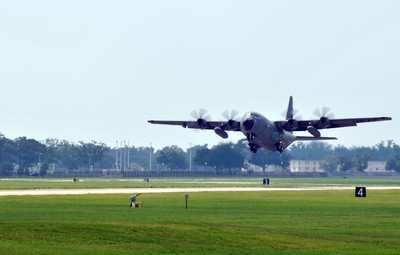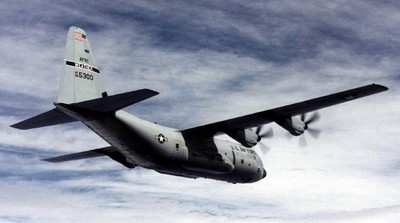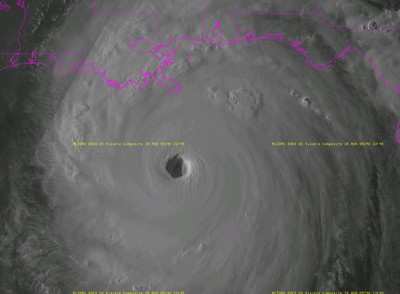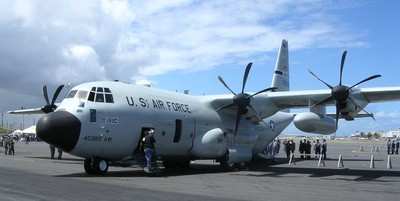Airmen Call On 'Smurfs' To Help Predict Storm Behavior
Hurricane Hunters from the Air Force Reserve's 403rd Wing at
Keesler AFB in Mississippi spent the third anniversary of Hurricane
Katrina flying into yet another tempest, Hurricane Gustav, which
made landfall Monday just west of Grand Island, LA.

Three years ago, the Hurricane Hunters evacuated aircraft and
personnel from this Gulf-Coast base to forward operating locations,
where they continued flying into Katrina to provide the National
Hurricane Center with critical data used by forecasters to make
warnings to areas in the path of the storm.
Crews watched from 10,000 feet as the pounding surf and
pulverizing winds destroyed the Mississippi Gulf Coast, including
their homes, businesses and those of their friends and family. In
the days following Katrina, the citizen-airmen of the 53rd Weather
Reconnaissance Squadron continued flying missions, never missing a
single tasking.
Officials deployed the 403rd Wing's fleet of WC-130J and C-130J
aircraft to forward operating locations last month when Tropical
Storm Fay threatened heavy winds across the Gulf Coast. Aircraft
remained in place as follow-on taskings called for them to fly
missions into Hurricane Gustav and another recently developed
system, Tropical Storm Hanna.

Any time a tropical system threatens the US coastline or those
of US interests in the Atlantic, Pacific and Caribbean basin, the
Hurricane Hunters fly around-the-clock missions.
Tasked by the National Hurricane Center, the Hurricane Hunters
flew several missions into Gustav, pinpointing the location of the
center of the storm and providing real-time data to forecasters via
satellite communication.
Information relayed to the National Hurricane Center helps
forecasters to narrow warning areas by more than 30 percent. With
increased accuracy in the forecast, the likelihood that people in
those areas will heed watches and warnings also improves.
This year, all 10 state-of-the-art WC-130J aircraft are equipped
with the stepped-frequency microwave radiometer, which allows
airmen on board to measure surface winds directly below the
aircraft constantly. The SFMR, affectionately known as the "Smurf,"
also can determine rainfall rates within a storm system. This, in
addition to wind speed measurements at flight level, provides
structural detail of the storm.

Already this season, the Smurf has given forecasters
significantly more data to feed into their models and provided more
accurate surface-level wind data not always available in the
past.
Having the Smurf on board is the most important advancement for
this season, according to Air Force Lt. Col. Jon Talbot, chief
aerial reconnaissance weather officer for the Hurricane Hunters.
With the full capability to provide surface wind speed data, the
unit gives National Hurricane Center forecasters the most accurate
surface wind speed information prior to landfall.

"This translates into more accurate warnings for the public," he
said.
(Aero-News salutes Air Force Tech. Sgt. James B. Pritchett,
403rd Wing Public Affairs Office.)
 Airborne 08.29.25: G800 Delivery, Alaska F-35 Crash, USCG-RCAF Medevac
Airborne 08.29.25: G800 Delivery, Alaska F-35 Crash, USCG-RCAF Medevac Aero-News: Quote of the Day (08.30.25)
Aero-News: Quote of the Day (08.30.25) ANN's Daily Aero-Term (08.30.25): Low Approach
ANN's Daily Aero-Term (08.30.25): Low Approach ANN's Daily Aero-Linx (08.30.25)
ANN's Daily Aero-Linx (08.30.25) NTSB Final Report: Excalibur Excalibur
NTSB Final Report: Excalibur Excalibur






